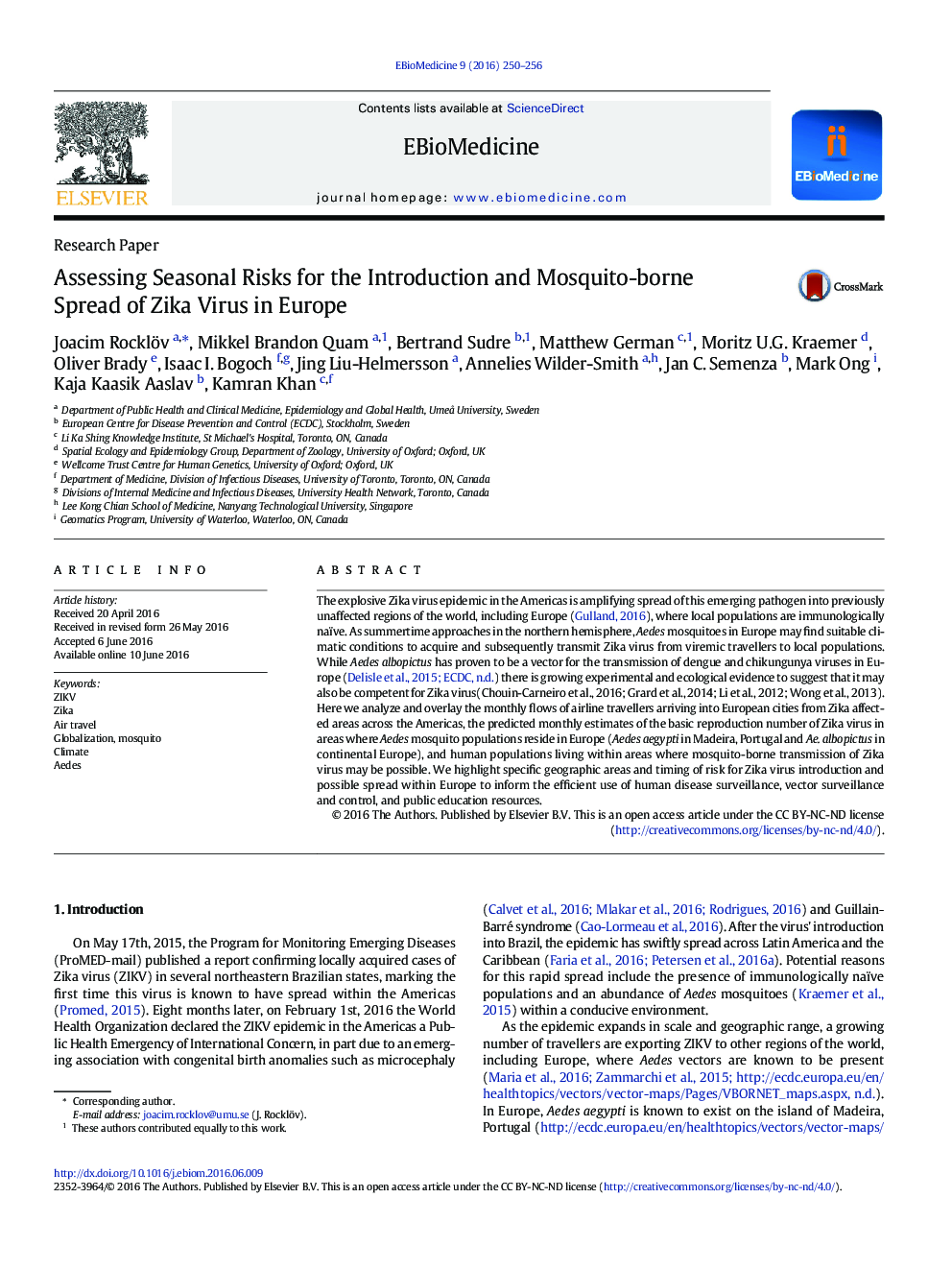| کد مقاله | کد نشریه | سال انتشار | مقاله انگلیسی | نسخه تمام متن |
|---|---|---|---|---|
| 2120722 | 1546890 | 2016 | 7 صفحه PDF | دانلود رایگان |
• A validated climate model suggests mosquito-borne Zika transmission risk peaks in July and August in parts of Southern Europe
• This analysis assumes European and Latin American Aedes vectors have similar competence to transmit Zika virus
• Air travel peak from regions of the Americas aligns with peak predicted capacity of European Aedes vectors to transmit Zika
• Findings could help health officials identify where and when risk for Zika importation and local transmission is heightenedThe imminent arrival of summer in the northern hemisphere brings an elevated risk of Zika virus epidemics outside of the Americas. In Europe, established populations of Aedes aegypti and Aedes albopictus mosquitoes might be capable of transmitting Zika virus locally, if travellers introduce the virus from other areas of the world. Here we calibrate a model of vectorial capacity for Zika virus transmission in Europe, which we overlay with arriving air travellers into Europe from Zika affected areas in the Americas. We highlight specific geographic areas and timing of risk for Zika virus introduction and potential autochthonous transmission to inform European disease surveillance and control activities.
The explosive Zika virus epidemic in the Americas is amplifying spread of this emerging pathogen into previously unaffected regions of the world, including Europe (Gulland, 2016), where local populations are immunologically naïve. As summertime approaches in the northern hemisphere, Aedes mosquitoes in Europe may find suitable climatic conditions to acquire and subsequently transmit Zika virus from viremic travellers to local populations. While Aedes albopictus has proven to be a vector for the transmission of dengue and chikungunya viruses in Europe ( Delisle, E., et al., 2015 and ECDC,, n.d) there is growing experimental and ecological evidence to suggest that it may also be competent for Zika virus(Chouin-Carneiro et al., 2016; Grard et al., 2014; Li et al., 2012; Wong et al., 2013). Here we analyze and overlay the monthly flows of airline travellers arriving into European cities from Zika affected areas across the Americas, the predicted monthly estimates of the basic reproduction number of Zika virus in areas where Aedes mosquito populations reside in Europe (Aedes aegypti in Madeira, Portugal and Ae. albopictus in continental Europe), and human populations living within areas where mosquito-borne transmission of Zika virus may be possible. We highlight specific geographic areas and timing of risk for Zika virus introduction and possible spread within Europe to inform the efficient use of human disease surveillance, vector surveillance and control, and public education resources.
Journal: EBioMedicine - Volume 9, July 2016, Pages 250–256
